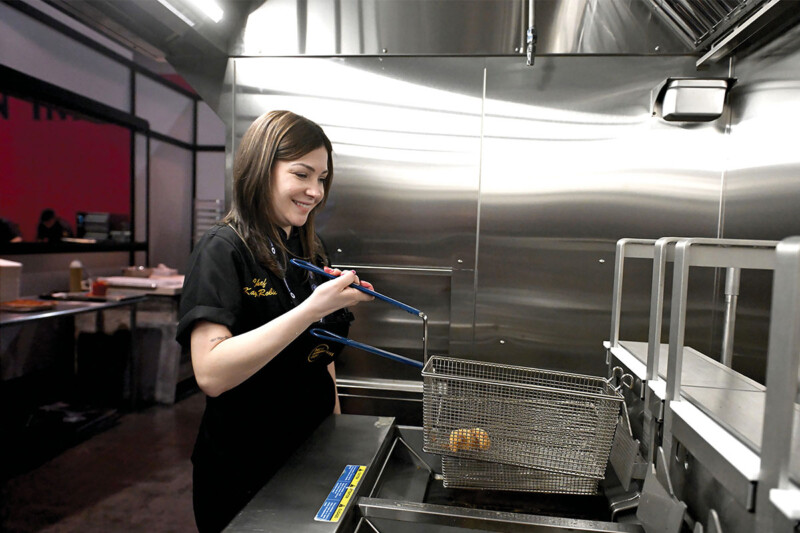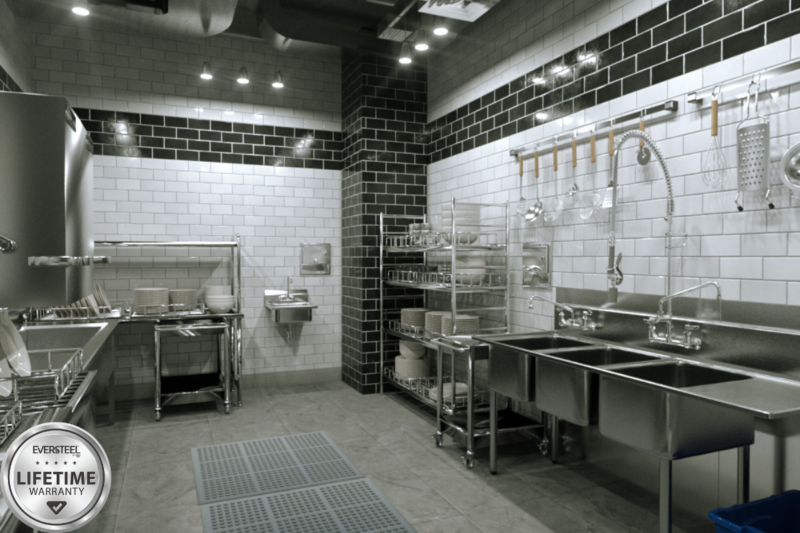Anatomy of a Scrapping Station
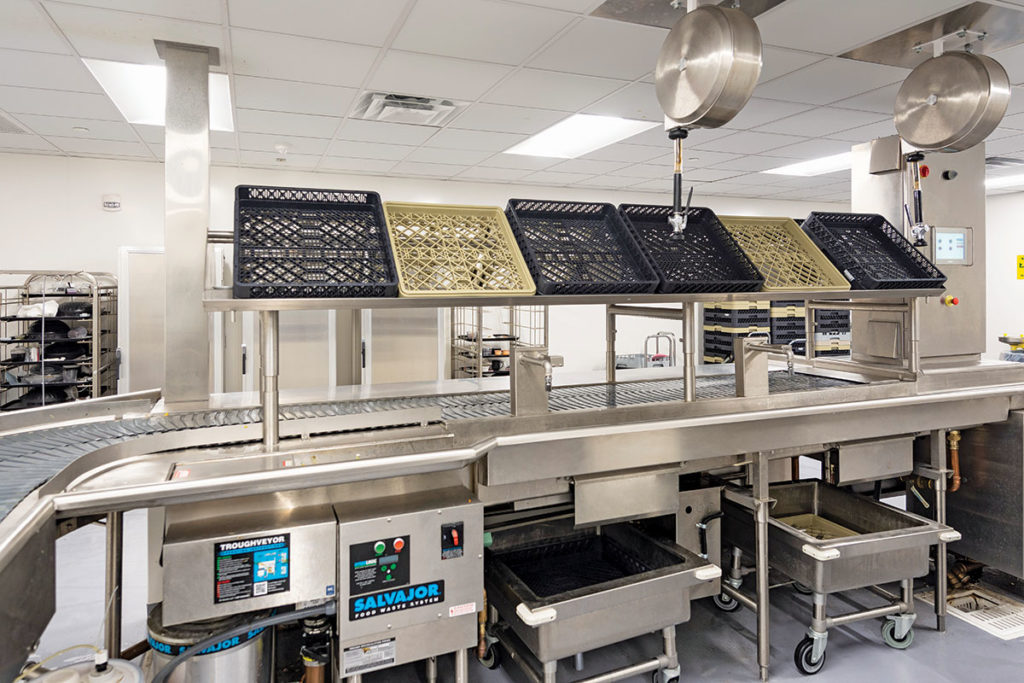
When ProMedica Toledo Hospital set out to build the Generations Tower, a 13-story patient building in Toledo, Ohio, conserving water and energy was a priority. “It’s a social responsibility when you’re a large entity in the community. It’s the right thing to do,” says Ron Dorchak, system director, nutrition services for ProMedica Health System. The tower opened in June and includes a main kitchen for patient feeding on the lower level and a servery on the first floor. Systems Design Int’l., based in Greenwood Village, Colo., served as the foodservice consulting firm on the project. Along with conserving water and energy as much as possible, the designers also had to make the most of limited space. One way they met both challenges was by creating one advanced scrapping station on the lower level. It processes trays from patients and guests in the servery as well as any wares from the back-of-house. (The team designated different areas to handle pot-and-pan and cart washing.) “We thought, why not incorporate warewashing into one general area instead of having multiple scrapping stations, dishmachines and so on spread across different levels?” says Jason Clarke, director of production for SDI. “Consolidating warewashing functions also helps reduce water consumption.”

This high-tech, touchscreen emergency stop control panel shuts the door to the conveyor system shaft in case of fire. It also displays a video monitoring system of the parts of the conveyor that are out of sight.








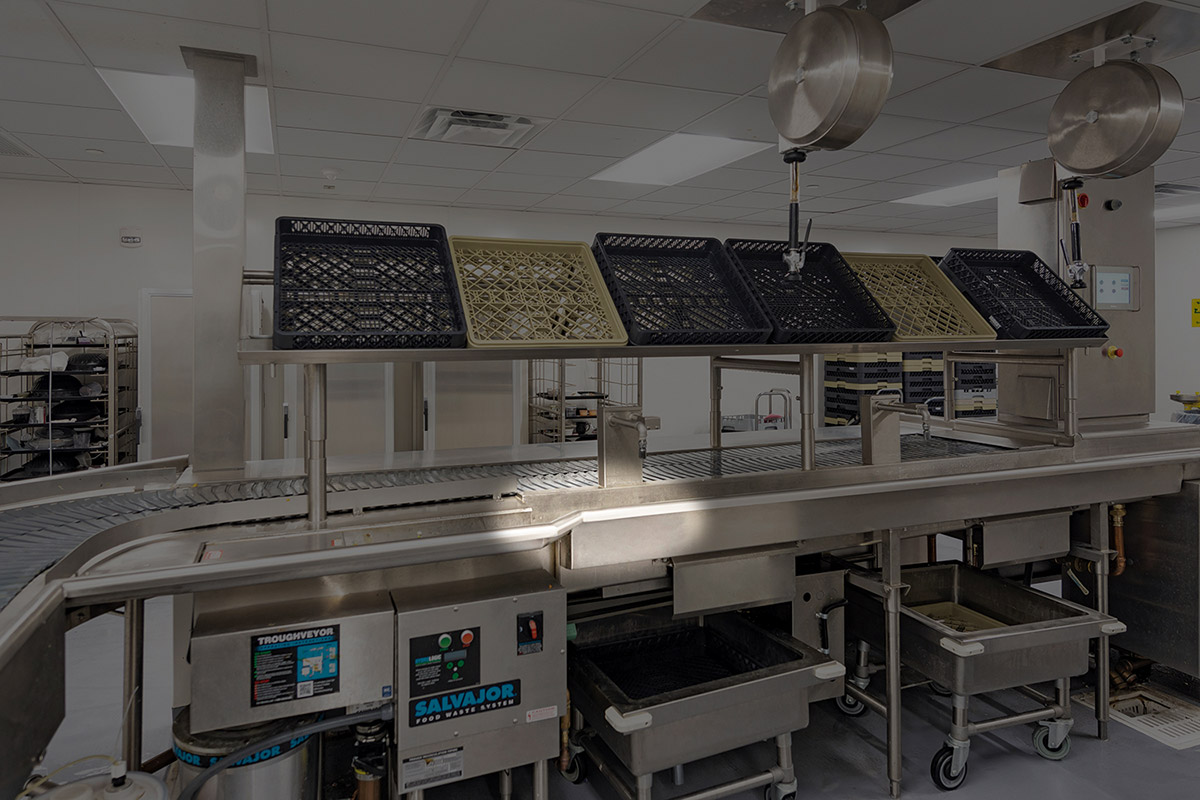
Employees unload food waste into a water trough conveyor, where it then flows into a scrap collector—not a disposer. This design allows water to pass through and recirculate to reduce water consumption. Employees empty the full collector into a mobile trash receptacle.
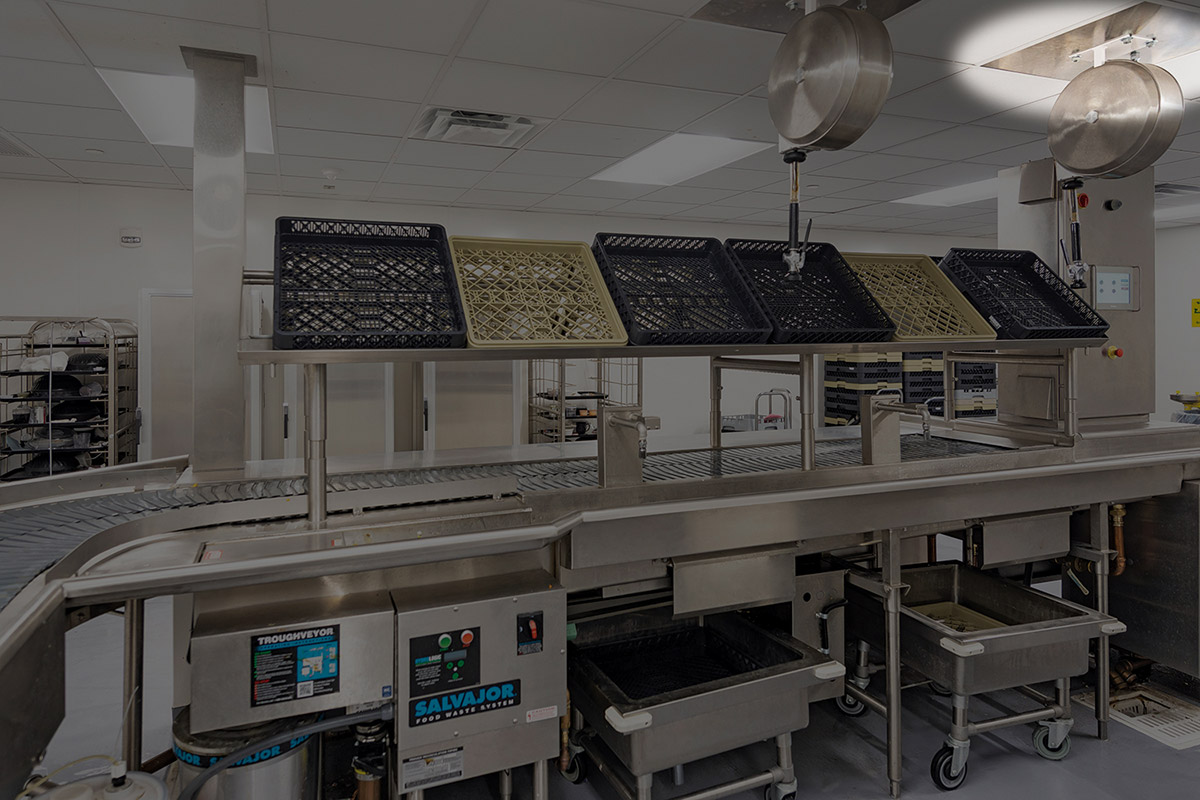
Adding stainless wall flashing to the ceiling makes for easy cleaning in areas at high risk for condensation.
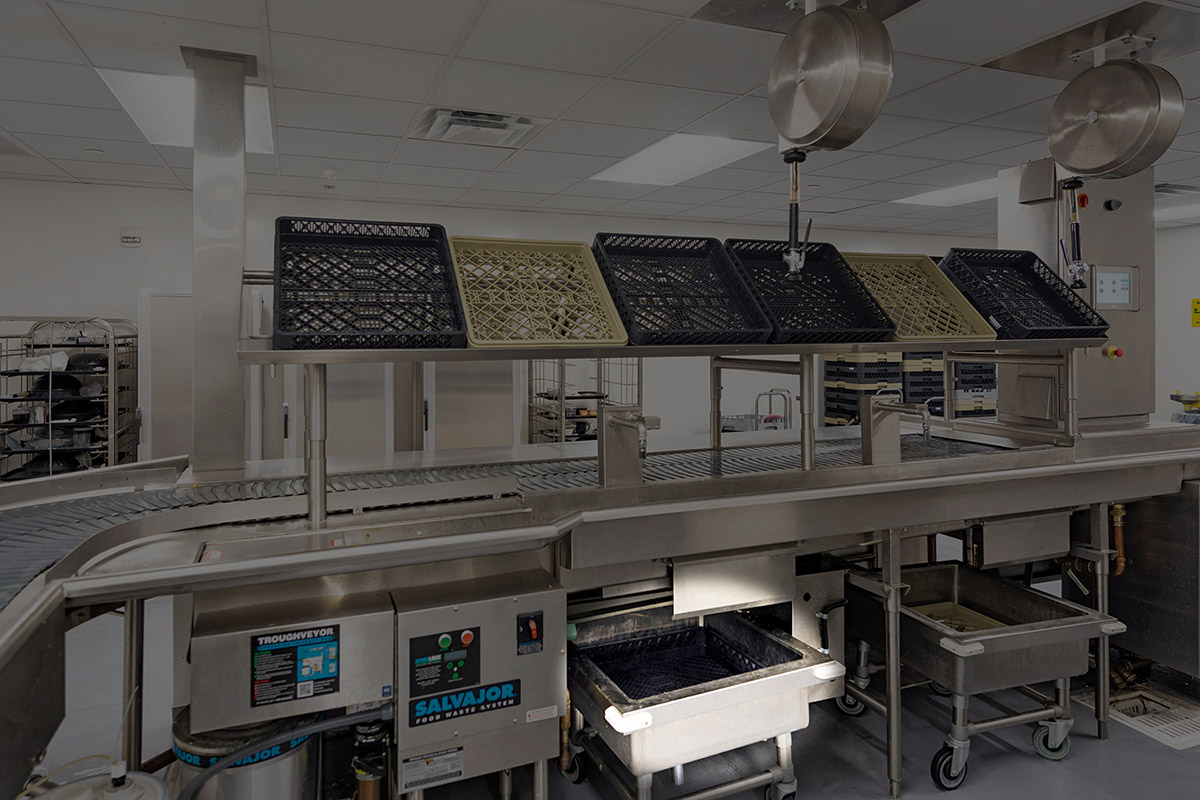
Silverware soak bins save labor because employees don’t have to scrub each individual item. Mobile units with twist waste drains make it easy to empty water.
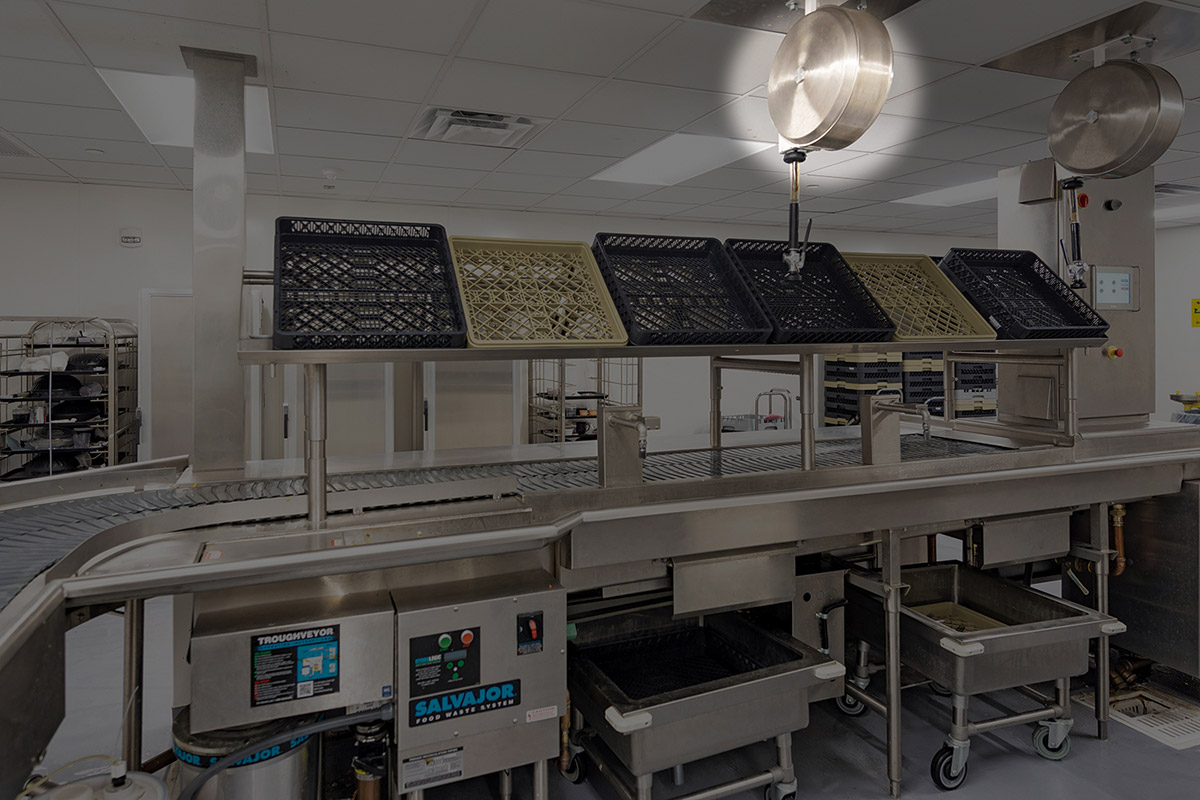
SDI mounted retractable hose reels on the ceiling so they stay out of the way. Attaching them to the dishtable could have resulted in a tripping hazard if someone pulled the hose out, worked and then didn’t reel it back in. Low-flow nozzles contribute to water conservation.
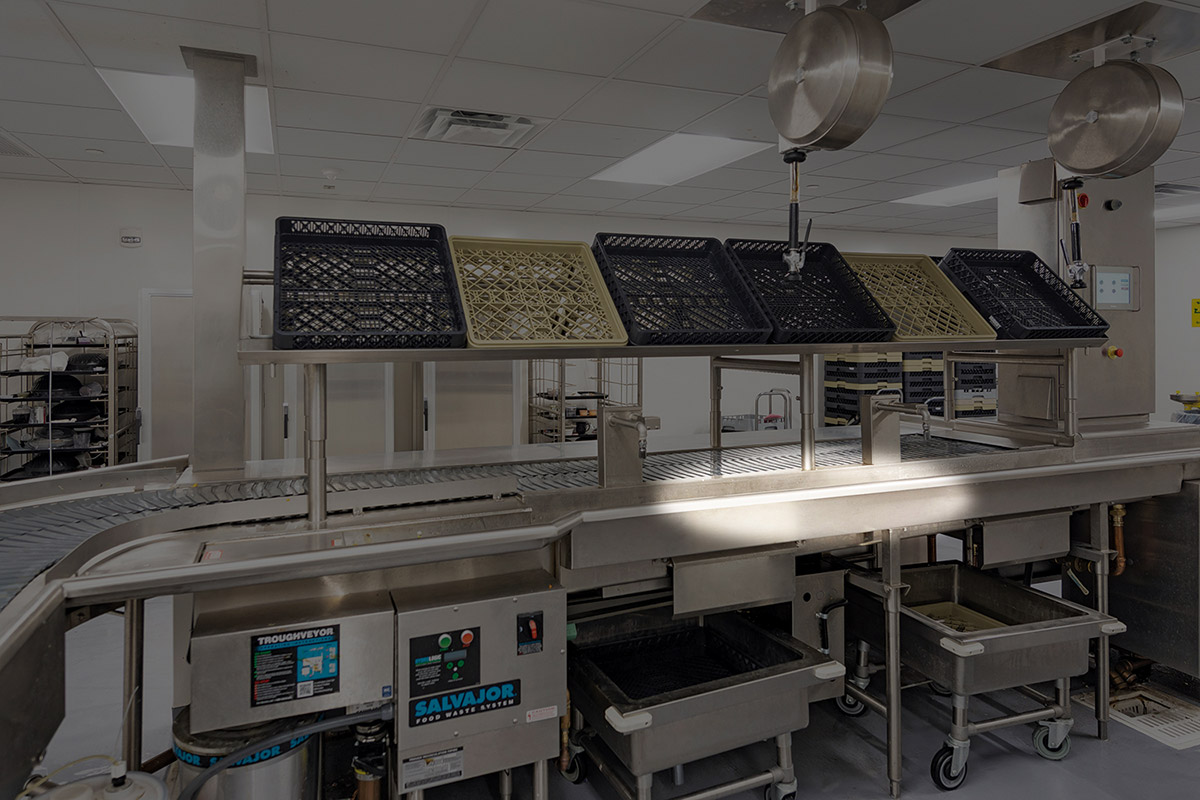
Magnetic walls in the water trough conveyor reduce the risk of losing stray silverware.
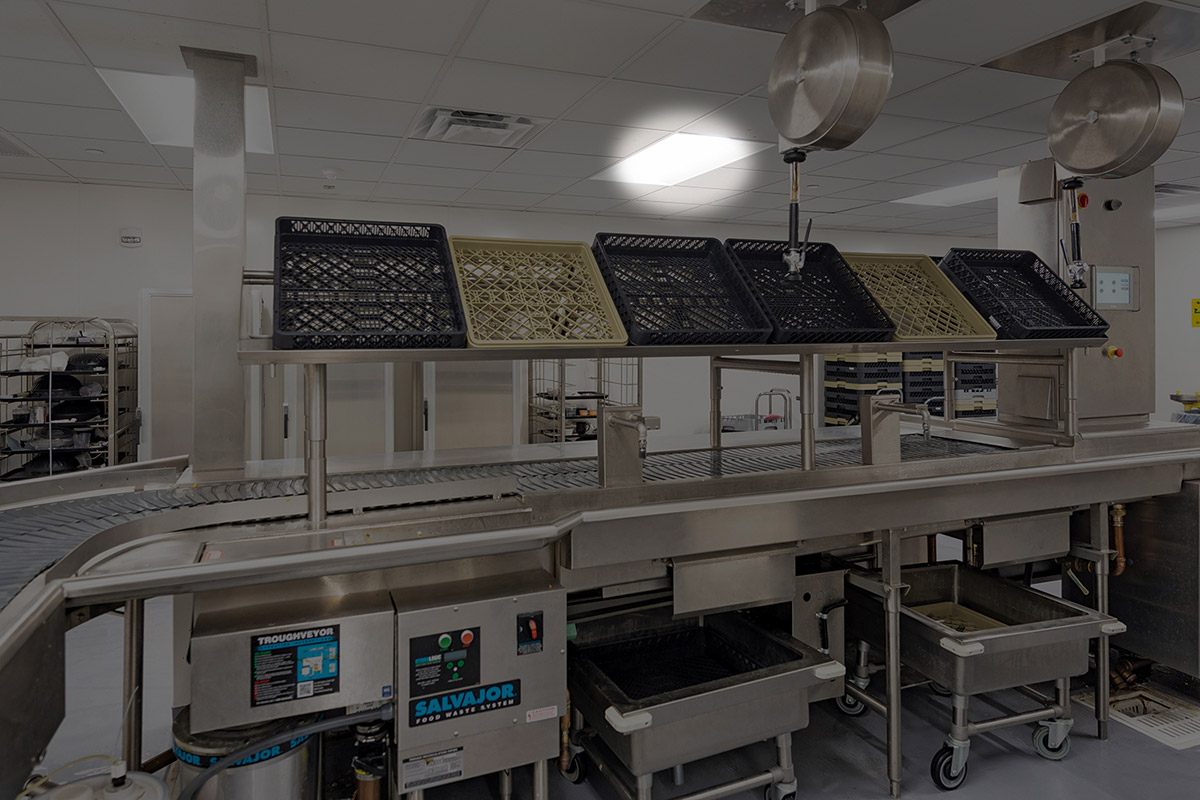
Because the hospital’s dishroom is in the basement, SDI specified plenty of LED lighting to create a bright environment where employees can comfortably see while they work.
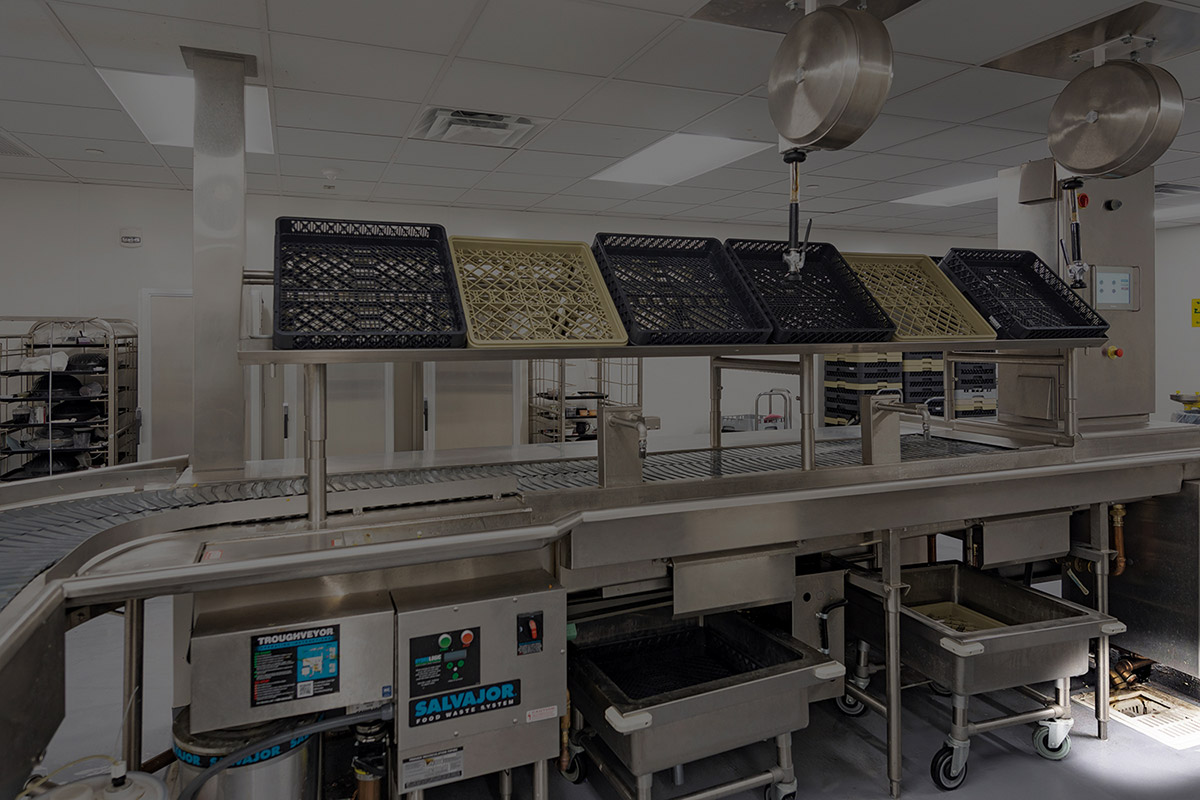
Prevent standing water on a dishroom floor by having an adequate number of floor drains and ensuring that the floor slopes to them.
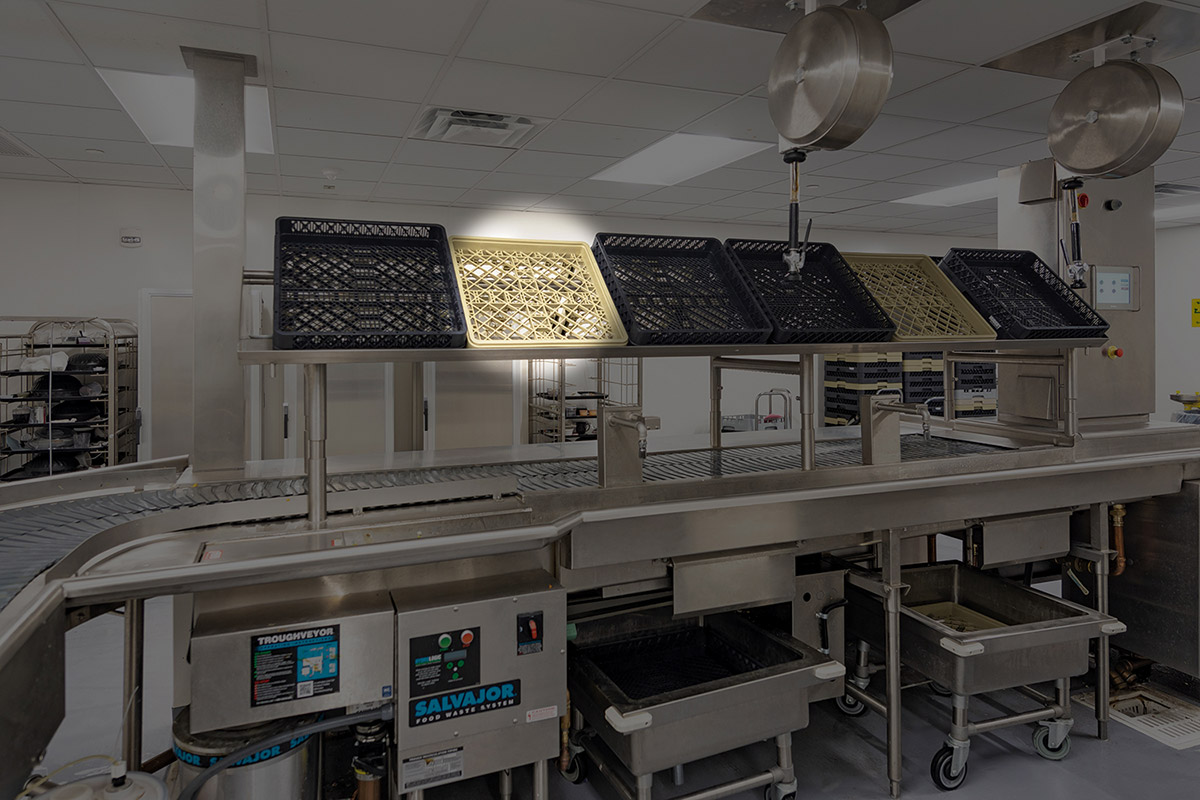
Double-sided shelving allows runners to unload soiled wares on one side and the employee at the scrapping station to sort through items on the other side. It keeps empty dishracks at the ready too.
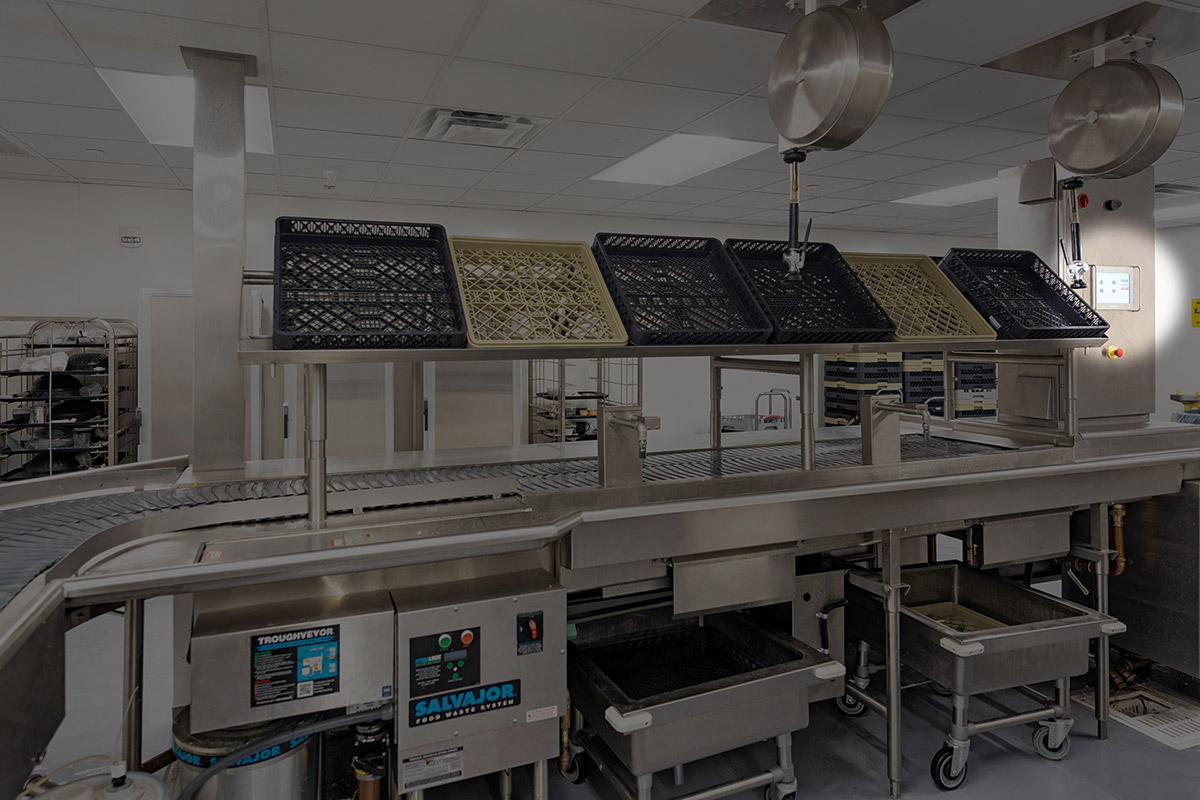
This high-tech, touchscreen emergency stop control panel shuts the door to the conveyor system shaft in case of fire. It also displays a video monitoring system of the parts of the conveyor that are out of sight.
RELATED CONTENT
- Advertisement -
- Advertisement -
- Advertisement -
TRENDING NOW
- Advertisement -
- Advertisement -
- Advertisement -

